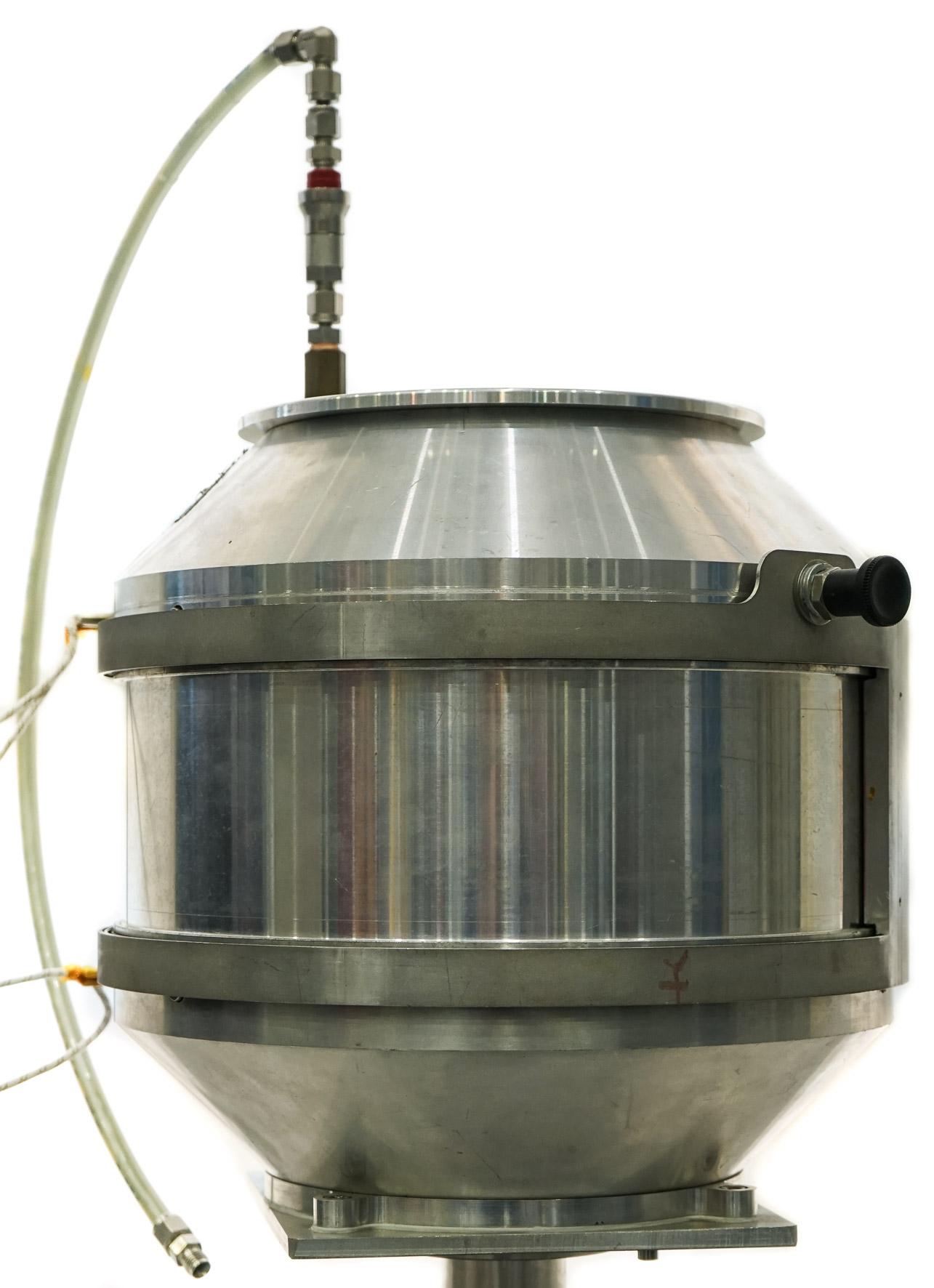
2 minute read
2.4.4 Environmental chamber F-6
A
§2.4 Furnaces A
2.4.4 Environmental chamber F-6
Ancillary code F-6
Compatible instrument Echidna, Kowari, Sika, Taipan, Wombat
Temperature range 300 K to ∼400 K
Mount required for sample M6 male threaded post
Inbuilt thermometry CernoxNTC sensor DT-670 silicon diode PT100/1000 platinum resistor
Sample containers Vanadium can 100 bar Stainless steel furnace can Complementary ancillary P-2: 100 kN load frame 308 Sample mounted on post with M6 thread
Neutron beam
User instruction
SICS control I-2981 Operation of Environmental Chamber F-6 User Instruction Eurotherm 1 heater
Equipment Number 220185
This environmental chamber is used to keep physically large samples at a well-controlled temperature between room temperature and ∼100◦C. A constant flow of nitrogen gas passes over two heater elements to warm the sample mounted inside the chamber. A sliding door provides easy access to the sample mount.
It can be used on Kowari by mounting it on the load frame P-2. Otherwise, it can be mounted on a base which fits the sample stage of Echidna, Sika, Taipan and Wombat.
107 1.5 90
Figure 2.19: Schematic (left) and photo (right) of F-6.
Magnetic and electric fields
Chapter 3
The magnets available at ACNS come in two forms they either have an inbuilt temperature control unit (VTI), or can be fitted with a closed-cycle cryofurnace. The orientation of the magnetic field relative to the neutron beam and, if the sample is a single crystal, to a particular crystal axis is often important. The magnetic field orientations available are either perpendicular to the beam or parallel to the neutron beam. So all vertical magnetic are exclusively perpendicular to the beam. While all horizontal magnets may produce fields perpendicular to the beam, however only HM-1and HM-2can produce fields parallel to the beam. Just to confuse things further HM-3is mounted as a horizontal magnet on Platypusbut is rotated to act as a vertical magnet on Wombat, Bilby, and Quokka. Superconducting magnets (all magnets except HM-3) are susceptible to "quenching" this occurs when part of the coil winding falls out of the superconducting state.In the nonsuperconducting state the energising current for the magnet now heats the coils due to I2R heating and the field rapidly collapses releasing even more energy. In wet cryostats AVM-1, AVM-2and HM-2a quench will result in loss of liquid helium and heating of the coils. Re-cooling and refilling the liquid helium may take 12 hours. HM-1is a dry high temperature superconducting magnet hence a quench results in the coils heating and the power supply tripping. The safety trip can only be reset once the temperature of the coils has returned to the safe range. The most common reasons for a quench occurring are driving the magnet and cryostat beyond the parameters provided by sample environment (ramp rate, max current and max VTI temperature, etc) or the movement of ferromagnetic material near the magnet. To reduce the chance of a quench;
• do not increase field ramp rates without discussion with sample environment
• do not enter the enclosure till the magnet has ramped to less than 1T
• do not conduct a sample change until the magnet has ramped to zero field.
• use only non-magnetic screws and sample holders (no mild steel screws)
• ensure the sample holder is rigid so the sample will not move once the field is applied.


